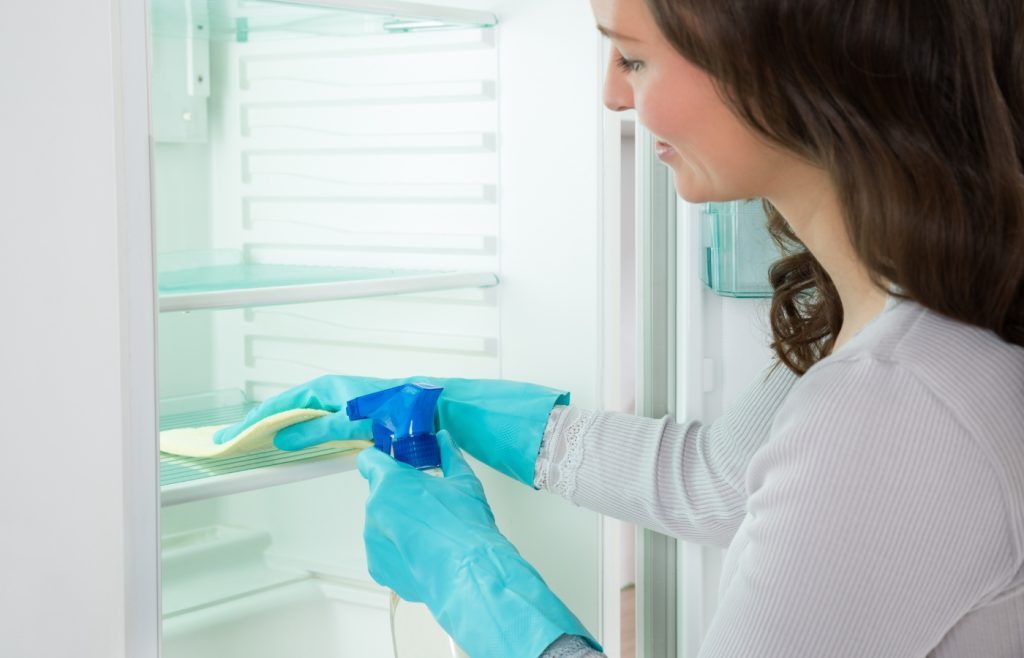The refrigerator is a central element in any kitchen, essential for keeping your food in good condition. However, it is often neglected during cleaning, due to a lack of time or method.
Regular cleaning is crucial, not only to ensure the freshness of your products but also to prevent bacteria and unpleasant odors. Here’s how to maintain your fridge simply and naturally, step by step.
Why clean your fridge regularly?
A poorly maintained fridge quickly becomes a breeding ground for bacteria. Food residues, mold, and accumulated dirt promote their proliferation, which can affect the preservation of your food and your health.
If possible, clean your fridge every two weeks. If that feels too frequent, a monthly cleaning is the absolute minimum.
Also, know that a dirty refrigerator operates less efficiently. Dust and grease can accumulate on the exterior grills or the motor, leading to overheating and increased energy consumption. These are all good reasons not to neglect its maintenance.

What products to use for effective cleaning?
Nothing beats natural products for cleaning your fridge without risking your food or health. Here are the best options:
- Baking soda: Mix three tablespoons of baking soda with two tablespoons of household alcohol and a bit of warm water to create a cleaning paste. This solution is ideal for removing dirt and neutralizing odors.
- White vinegar: Dilute it in hot water for disinfection and odor elimination. Use a soft cloth soaked in the solution to clean every surface, paying special attention to seals and corners.
- Lemon juice: While less powerful, it remains an excellent option for eliminating bad odors. Pour some onto a sponge and wipe down the interior surfaces.
- Soda crystals: An effective alternative to baking soda, perfect for tougher stains.
The steps for optimal cleaning
- Empty the fridge completely: Remove all food items, and take the opportunity to sort out expired or questionable items. Also, check expiration dates to avoid keeping food that is no longer fit for consumption.
- Clean removable parts: Take out shelves, vegetable bins, and other removable compartments. Wash them thoroughly with soapy water or baking soda. Let them air dry or wipe them with a clean cloth.
- Clean the interior of the fridge: First, use a dry cloth to wipe away visible crumbs or dirt. Then, apply your natural solution (baking soda, vinegar, or lemon) with a damp sponge or cloth. Gently scrub the walls, seals, and corners, then rinse with clear water.
- Clean the exterior of the fridge: Don’t neglect the exterior surfaces: use a sponge soaked in soapy water or dish soap to remove fingerprints, grease, or dust. For the back grills, a vacuum or a soft-bristled brush is recommended to improve energy efficiency.
- Replace the items and food: Once everything is dry, put the compartments back in the fridge. Then organize your food to optimize storage: remove unnecessary packaging, place leftovers in airtight containers, and use paper towels in the vegetable bin to minimize mess.

Optimize your fridge maintenance
Good organization not only facilitates cleaning but also helps in preserving food. Here are some tips:
- Remove excess packaging: Yogurt pots or other packaged products take up space and may harbor bacteria.
- Use airtight containers: They help keep leftovers fresh without undesirable odors and take up less space.
- Add an odor absorber: Place a bowl of baking soda or half a lemon in the bottom of your fridge to neutralize odors.
Don’t forget the freezer
If your fridge has a freezer, don’t forget to defrost it regularly. Excess ice buildup increases energy consumption and reduces available space.
To defrost, turn the appliance off, remove the food, and scrape off the ice with a wooden spatula. Then clean with a natural solution before turning it back on.

